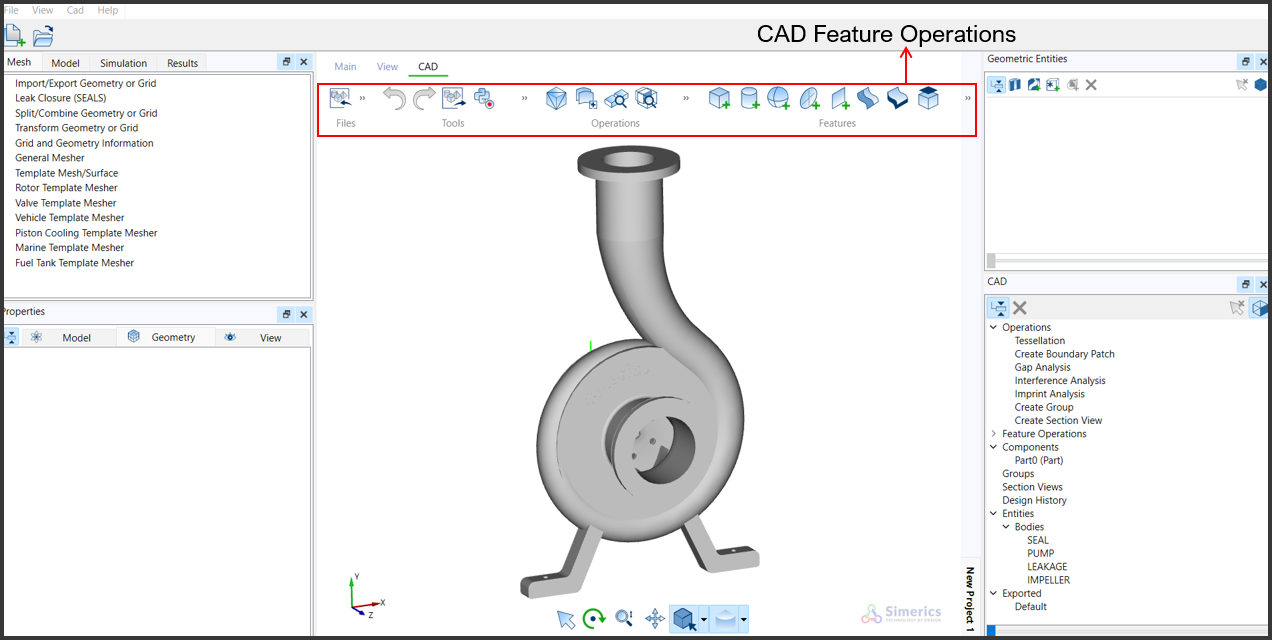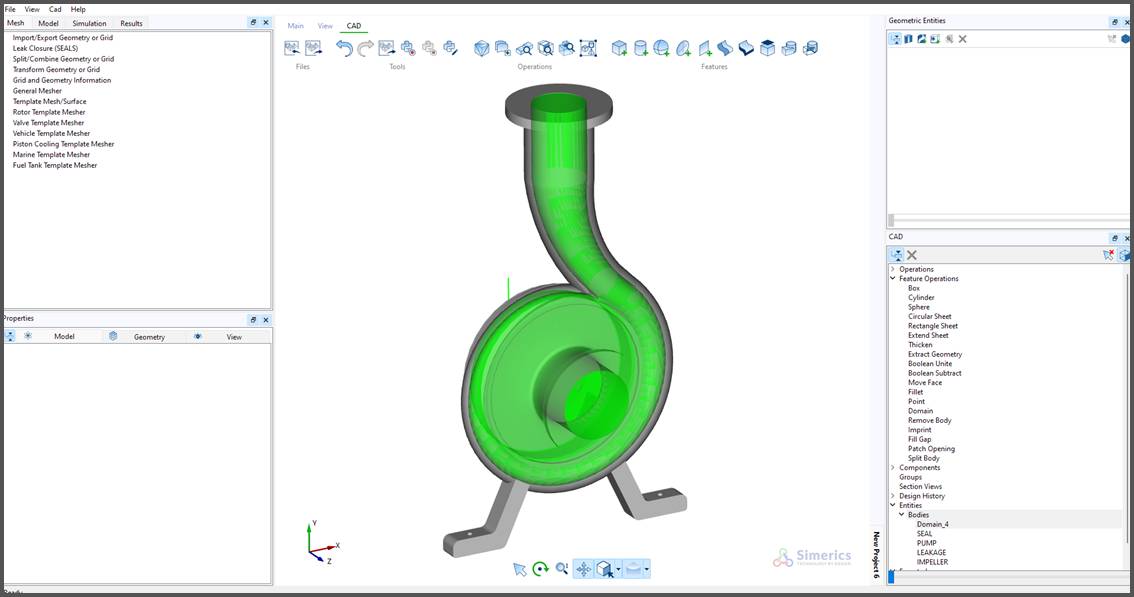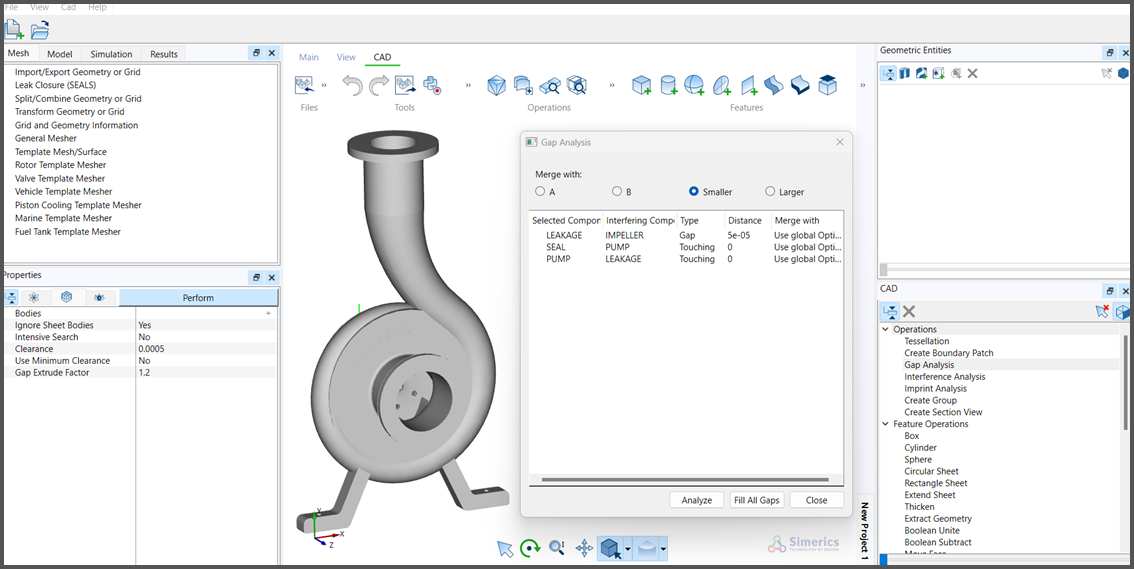Preparing CAD models for CFD simulation remains a significant bottleneck due to the complexity and time-consuming nature of the geometry preparation process. CFD engineers often spend countless hours resolving CAD geometry issues, which takes away from their core task—analyzing and interpreting simulation results. Although advancements in meshing technology have eased some aspects of handling CAD geometry, these challenges persist. This highlights the need for more efficient solutions to streamline the preparation phase and support seamless, robust CFD simulations.
To speed up these processes, the next release of Simerics-MP+ will include an integrated CAD Kernel. Simerics-CAD allows you to make the geometry related changes you need without leaving the Simerics environment and includes specific tools to make your geometry ready for automatic meshing.

Here are the key features of Simerics CAD:
Read Most CAD Formats – Simerics-CAD will read existing CAD models written in neutral formats such as STEP, Parasolid and IGES as well as directly from native CAD formats such as SolidWorks, Creo, Catia, NX, etc.
Fluid Domain Extraction – This feature enables the creation of a fluid volume by selecting the locations where the fluid enters and exits the solid geometry.

Interference Analysis – It performs the interference analysis on the selected bodies. It will identify the pairs which have an overlap/ interference between them as “Overlap”. The pairs of bodies which have an overlap/interference will be considered for subtraction.
Gap Analysis – The Gap Analysis tool is used to identify and fill gaps between bodies. This is useful in ensuring that you have a water/air tight internal volume before extracting the flow volume.

Imprint Analysis – Imprinting helps to transfer mesh details between different bodies for good continuity and to ensure reliable simulation results. This analysis helps to find out the volumes which are sharing common surfaces. This is a requirement for building meshes for Conjugate Heat Transfer simulations otherwise there is no thermal connection modeled between adjoining bodies.
Split Body – Tools are included to divide up your fluid domains to model rotating regions, etc.
If you are interested in exploring these features of Simerics-CAD, please reach out to your local Simerics office.